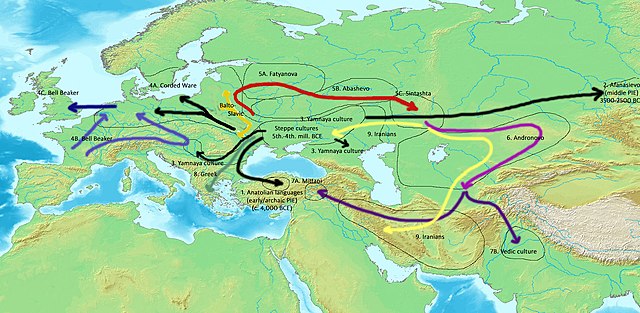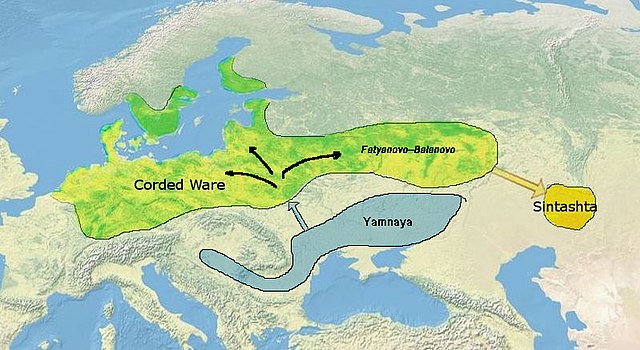The Cemetery H culture was a Bronze Age culture in the Punjab region in the northern part of the Indian subcontinent, from about 1900 BCE until about 1300 BCE. It is regarded as a regional form of the late phase of the Harappan civilisation, but also as the manifestation of a first wave of Indo-Aryan migrations, predating the migrations of the proto-Rig Vedic people.
The extent of the Swat and Cemetery H cultures are indicated; Geography of the Rigveda, with Rigvedic rivers names
The Indo-Aryan migrations were the migrations into the Indian subcontinent of Indo-Aryan peoples, an ethnolinguistic group that spoke Indo-Aryan languages. These are the predominant languages of today's Bangladesh, Maldives, Nepal, North India, Eastern Pakistan, and Sri Lanka.
Scheme of Indo-European language dispersals from c. 4000 to 1000 BCE according to the widely held Kurgan hypothesis. – Center: Steppe cultures 1 (black): Anatolian languages (archaic PIE) 2 (black): Afanasievo culture (early PIE) 3 (black) Yamnaya culture expansion (Pontic-Caspian steppe, Danube Valley) (late PIE) 4A (black): Western Corded Ware 4B-C (blue & dark blue): Bell Beaker; adopted by Indo-European speakers 5A-B (red): Eastern Corded ware
A 1910 depiction of Aryans entering India, from Hutchinson's History of the Nations
An early 20th century depiction of Aryans settling in agricultural villages in India
According to Allentoft (2015), the Sintashta culture probably derived from the Corded Ware Culture.





